Using 911facts.dk

How do you get the most out of this site?
Truth Movement
Publications
Booking
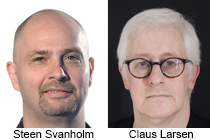
We are available for booking a lecture or a workshop here.

The hijackers were too incompetent to fly planes
Claim
“There are some who maintain that the mythical 9/11 hijackers, although proven to be too incompetent to fly a little Cessna 172, had acquired the impressive skills that enabled them to fly airliners by training in flight simulators.”
“…de mytiske 9/11 flykaprere havde lært sig de imponerende evner der satte dem i stand til at flyve passagerfly i flysimulatorer, selv om det er bevist, at de var for inkompetente til at flyve et lille Cessna 172.”0
Background
The claim is made by Nila Sagadevan, a member of Physics9111, a scientific panel whose members also count Kevin Barrett and Steven E. Jones, both famous in the Truth Movement. The claim is repeated by members of the Danish Truth Movement2.
Later, Sagadevan quotes the hijackers’ instructors:
In fact, here’s what their flight instructors had to say about the aptitude of these budding aviators:
Mohammed Atta: “His attention span was zero.”
Khalid Al-Mihdhar: “We didn’t kick him out, but he didn’t live up to our standards.”
Marwan Al-Shehhi: “He was dropped because of his limited English and incompetence at the controls.”
Salem Al-Hazmi: “We advised him to quit after two lessons.”
Hani Hanjour: “His English was horrible, and his mechanical skills were even worse. It was like he had hardly even ever driven a car. I’m still to this day amazed that he could have flown into the Pentagon. He could not fly at all.”0
Facts
The hijackers had two functions:
- The group intended to fly the planes into their intended targets. This group consisted of four of the hijackers.
- The groupd intended to overcome any resistence, thus securing that the planes were hijacked and stayed hijacked until the targets had been hit. This group consisted of 15 of the hijackers.
The 9/11 Commission Report describes in detail what educational background the four pilots had:

Mohamed Atta, American Airlines Flight 11
Huffman Aviation, Venice, Florida 3, 4, 5, 6
- Started flight instruction, Huffman Aviation, Florida
- Enrolled in “Accelerated Pilot Program”
- Solo flights
- Passed “Private pilot airman”-exam
- Passed “State I”-exam for instrumental flying
- Passed “Commercial pilot”-exam
- Achieved flying license
- Trained in flight simulator for commercial jets

Marwan al-Shehhi, United Airlines Flight 175
Huffman Aviation, Venice, Florida 7, 8, 9, 10
- Started training in 1997
- Passed “Commercial pilot”-exam
- Achieved flying license
- Trained in flight simulator for commercial jets
Pan Am International Flight Academy, Mesa
- Completed training in flight simulator for Boeing 767

Hani Hanjour, American Airlines Flight 77
Arizona Aviation, Mesa, Arizona 11, 12
- Passed “Accelerated Pilot Program”
- Solo flights
- Passed “Private pilot airman”-exam
- Passed “State I”-examn for instrumental flying
- Passed “Commercial pilot”-exams
- Achieved flying license
- Trained in flight simulator for commercial jets

Ziad Jarrah, United Airlines Flight 93
Florida Flight Training Center 13, 14
- Passed private pilot program
- Achieved flight certificate for single-engine plane
It is obvious that all four hijackers had sufficient knowledge and practice to fly the hijacked planes. Nila Sagadevan’s quotes from the flight instructors are thus very manipulative, since he is taking them out of a context and deliberately leaves out the fact that the hijackers could actually commandeer planes.
As a qualified pilot on a passenger plane, you are not merely trained to fly but in particular to fly safely. That is why training is also very much about being able to handle the multitude of problems that can occur during a flight.
This was not necessary for the hijackers: Their goal with the training was not to be trained to fly as any pilot would be trained. Their goal was only to be trained to the point where they could steer the planes to their intended targets. All they had to do was to grab the controls, turn the planes around, and hit their targets.
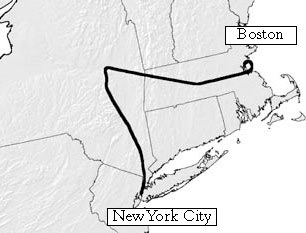 Flight 11 |
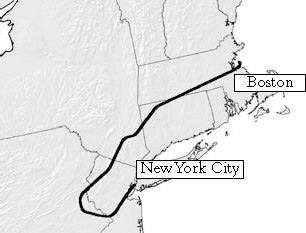 Flight 175 |
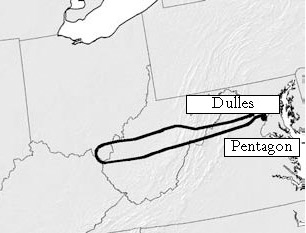 Flight 77 |
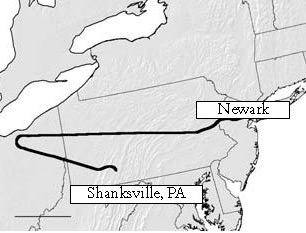 Flight 93 |
Logic
Several questions arise from this claim.
If the hijackers did not have enough training to control the planes:
- Who did the passengers on board Flight 93 attack?
- How could the hijackers hit the towers so precisely that they – according to another conspiracy theory – could hit the exact right floors, where the explosives had been placed?
- What about the pilots who, in the case of no hijackers, must have controlled the planes? How were they persuaded/forced to hit the Twin Towers and the Pentagon?
If there was a conspiracy that exploited the terrorists to believe that they were about to hijack the planes and hit the buildings, why not choose someone highly qualified?
The claim acknowledges that there were hijackers, which contradicts another popular claim, namely that there were no hijackers. Instead, the planes were remotely controlled.
Conclusion
The claim is therefore:
- False
- In conflict with other claims
- manipulative
Sources
-
“There are some who maintain that the mythical 9/11 hijackers, although proven to be too incompetent to fly a little Cessna 172, had acquired the impressive skills that enabled them to fly airliners by training in flight simulators.”0
The Impossibility of Flying Heavy Aircraft Without Training, Nila Sagadevan
- Physics911
- Jakob Hede Madsen og Niels Harrit, Go’Morgen Danmark, 11. december 2007
- The 9/11 Commission Report, side 224
After visiting the Airman Flight School in Norman, Oklahoma (where Zacarias Moussaoui would enroll several months later and where another al Qaeda operative, Ihab Ali, had taken lessons in the mid-1990s), Atta started flight instruction at Huffman Aviation in Venice, Florida, and both Atta and Shehhi subsequently enrolled in the Accelerated Pilot Program at that school. By the end of July, both of them took solo flights, and by mid-August they passed the private pilot airman test. They trained through the summer at Huffman, while Jarrah continued his training at FFTC.
- The 9/11 Commission Report, side 224
In late September, they decided to enroll at Jones Aviation in Sarasota, Florida, about 20 miles north of Venice.According to the instructor at Jones, the two were aggressive, rude, and sometimes even fought with him to take over the controls during their training flights. In early October, they took the Stage I exam for instruments rating at Jones Aviation and failed. Very upset, they said they were in a hurry because jobs awaited them at home. Atta and Shehhi then returned to Huffman.
- The 9/11 Commission Report, side 227
Atta and Shehhi finished up at Huffman and earned their instrument certificates from the FAA in November. In mid-December 2000, they passed their commercial pilot tests and received their licenses. They then began training to fly large jets on a flight simulator. At about the same time, Jarrah began simulator training, also in Florida but at a different center. By the end of 2000, less than six months after their arrival, the three pilots on the East Coast were simulating flights on large jets.
- The 9/11 Commission Report, side 229
After returning to Florida from their trips, Atta and Shehhi visited Georgia, staying briefly in Norcross and Decatur, and renting a single-engine plane to fly with an instructor in Lawrenceville.
- The 9/11 Commission Report, side 224
After visiting the Airman Flight School in Norman, Oklahoma (where Zacarias Moussaoui would enroll several months later and where another al Qaeda operative, Ihab Ali, had taken lessons in the mid-1990s), Atta started flight instruction at Huffman Aviation in Venice, Florida, and both Atta and Shehhi subsequently enrolled in the Accelerated Pilot Program at that school. By the end of July, both of them took solo flights, and by mid-August they passed the private pilot airman test. They trained through the summer at Huffman, while Jarrah continued his training at FFTC.
- The 9/11 Commission Report, side 224
In late September, they decided to enroll at Jones Aviation in Sarasota, Florida, about 20 miles north of Venice.According to the instructor at Jones, the two were aggressive, rude, and sometimes even fought with him to take over the controls during their training flights. In early October, they took the Stage I exam for instruments rating at Jones Aviation and failed. Very upset, they said they were in a hurry because jobs awaited them at home. Atta and Shehhi then returned to Huffman.
- The 9/11 Commission Report, side 227
Atta and Shehhi finished up at Huffman and earned their instrument certificates from the FAA in November. In mid-December 2000, they passed their commercial pilot tests and received their licenses. They then began training to fly large jets on a flight simulator. At about the same time, Jarrah began simulator training, also in Florida but at a different center. By the end of 2000, less than six months after their arrival, the three pilots on the East Coast were simulating flights on large jets.
- The 9/11 Commission Report, side 229
After returning to Florida from their trips, Atta and Shehhi visited Georgia, staying briefly in Norcross and Decatur, and renting a single-engine plane to fly with an instructor in Lawrenceville.
- The 9/11 Commission Report, side 225-226
In 1996, Hanjour returned to the United States to pursue flight training, after being rejected by a Saudi flight school. He checked out flight schools in Florida, California, and Arizona; and he briefly started at a couple of them before returning to Saudi Arabia. In 1997, he returned to Florida and then, along with two friends, went back to Arizona and began his flight training there in earnest. After about three months, Hanjour was able to obtain his private pilot’s license. Several more months of training yielded him a commercial pilot certificate, issued by the Federal Aviation Administration (FAA) in April 1999.
- The 9/11 Commission Report, side 226-227
On December 8, Hanjour traveled to San Diego. His supposed destination was an English as a second language program in Oakland, California, which he had scheduled before leaving Saudi Arabia but never attended. Instead, as mentioned earlier, he joined Nawaf al Hazmi in San Diego. Hazmi and Hanjour left San Diego almost immediately and drove to Arizona. Settling in Mesa, Hanjour began refresher training at his old school, Arizona Aviation. He wanted to train on multi-engine planes, but had difficulties because his English was not good enough. The instructor advised him to discontinue but Hanjour said he could not go home without completing the training. In early 2001, he started training on a Boeing 737 simulator at Pan Am International Flight Academy in Mesa. An instructor there found his work well below standard and discouraged him from continuing. Again, Hanjour persevered; he completed the initial training by the end of March 2001.
- The 9/11 Commission Report, side 224
Jarrah arrived in Newark on June 27 and then flew to Venice. He immediately began the private pilot program at FFTC, intending to get a multi-engine license.
- The 9/11 Commission Report, side 224
In the meantime, Jarrah obtained a single-engine private pilot certificate in early August.
Q & A

